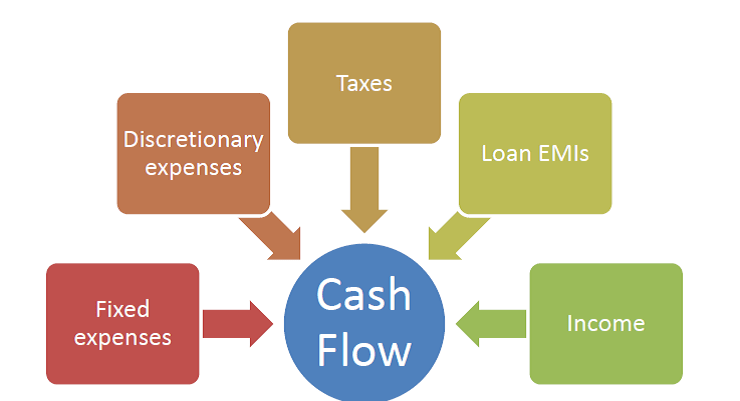In the world of business, finance planning plays a pivotal role in driving growth and achieving long-term success. Effective financial strategies not only provide stability but also lay the foundation for expansion and innovation. In this comprehensive article, we will delve into the realm of business financial planning for growth.
In this article, we will explore various aspects of financial planning, offering valuable insights, expert guidance, and practical tips to help you navigate the intricate landscape of financial decision-making.
1. Embracing Continuous Learning in Business Finance Planning

Business financial planning is a critical process that entrepreneurs undertake to strategically manage their financial resources and facilitate the growth of their businesses. Effective financial planning involves analyzing the current financial situation, setting goals, making informed decisions, and implementing strategies to optimize resources for growth.
In this comprehensive guide, we will explore various aspects of business financial planning for growth, covering essential topics such as budgeting, funding options, cash flow management, strategic investment, debt leveraging, financial forecasting, tax planning, efficient financial systems, performance measurement, and the alignment of financial planning with business strategy.
2. Budgeting for Growth

Budgeting plays a pivotal role in business finance planning for growth. It involves forecasting revenue, estimating expenses, and allocating resources to different business functions. A well-defined budget helps in setting spending limits, prioritizing investments, and tracking financial performance. By creating a comprehensive budget, businesses can ensure efficient utilization of financial resources to support their growth trajectory.
Within the budgeting process, businesses can incorporate techniques like zero-based budgeting, activity-based budgeting, and flexible budgeting to enhance their planning accuracy and adaptability. Moreover, continuous monitoring and periodic budget reviews enable businesses to make necessary adjustments, ensuring that the budget remains aligned with the evolving needs of the business.
3. Funding Options for Business Expansion

As businesses strive for growth, they often require additional funds to fuel their expansion initiatives. Exploring funding options is a crucial aspect of business financial planning. There are various sources of funding available, including equity financing, debt financing, venture capital, angel investors, and government grants. Each funding option has its advantages and considerations, and businesses must carefully evaluate and select the most suitable avenue based on their specific needs and circumstances.
Equity financing involves raising capital by selling a portion of the business’s ownership to investors. On the other hand, debt financing allows businesses to borrow funds with the obligation to repay them, typically with interest. Venture capital and angel investors provide funding in exchange for an equity stake and often offer valuable expertise and mentorship to the business. Government grants, on the other hand, are non-repayable funds provided by governmental bodies to support specific industries or projects.
When considering funding options, businesses must assess factors such as the cost of capital, dilution of ownership, repayment terms, investor expectations, and the potential impact on the business’s control and decision-making. By carefully weighing these factors and seeking professional guidance, businesses can secure the necessary funds to support their growth objectives.
4. Business finance planning and Managing Cash Flow for Sustainable Growth

Effective cash flow management is crucial for maintaining a healthy financial position and driving sustainable growth. Cash flow refers to the movement of money into and out of a business. Businesses must carefully monitor their cash inflows and outflows to ensure a positive cash flow, which is essential for meeting financial obligations, reinvesting in the business, and seizing growth opportunities.
To manage cash flow effectively, businesses can implement various strategies. These include maintaining a cash reserve for emergencies, optimizing working capital by efficiently managing accounts receivable, accounts payable, and inventory, negotiating favorable payment terms with suppliers, and implementing effective credit control measures.
Cash flow forecasting is another vital tool that allows businesses to project future cash inflows and outflows, helping them anticipate potential cash flow gaps and take proactive measures to mitigate them. By regularly reviewing and updating cash flow forecasts. Businesses can make informed decisions, such as adjusting expenses, pursuing additional funding if needed, or strategically timing investments.
Additionally, businesses can leverage technology and financial management tools to streamline cash flow processes, automate routine tasks, and gain real-time visibility into their cash position. This enables timely decision-making and proactive cash flow management, ultimately supporting sustainable growth.
5. Business financial planning, Strategic Investment, and Return on Investment (ROI)

Strategic investment involves allocating financial resources to projects, assets, or initiatives that have the potential to generate long-term value and contribute to business growth. When considering strategic investments, businesses must carefully assess the risk-reward tradeoff, evaluate the potential return on investment (ROI), and align investment decisions with their growth objectives.
To evaluate the ROI of an investment, businesses can employ financial analysis techniques such as net present value (NPV), internal rate of return (IRR), and payback period. These techniques help assess the profitability and financial viability of an investment by considering factors such as initial costs, expected cash flows, and the time value of money.
Businesses should also consider diversifying their investment portfolio to mitigate risk and optimize returns. By allocating funds across different asset classes, industries, or geographical regions, businesses can reduce their exposure to any single investment and potentially achieve a more balanced risk-return profile.
Moreover, monitoring the performance of investments is crucial to assess their contribution to growth. By regularly reviewing the financial performance of different investments, businesses can identify underperforming assets, make necessary adjustments, and reallocate resources to high-potential opportunities.
6. Debt Leveraging for Growth

Debt leveraging involves utilizing borrowed funds to finance business expansion or investment activities. When used strategically, debt leveraging can accelerate growth by allowing businesses to access additional capital without diluting ownership or sacrificing control.
Businesses can consider various types of debt instruments, such as bank loans, lines of credit, business credit cards, or trade credit, depending on their specific requirements. It is crucial to assess the terms and conditions of debt financing options, including interest rates, repayment terms, collateral requirements, and any associated fees.
However, businesses must exercise caution when leveraging debt, as excessive borrowing or inability to meet repayment obligations can pose significant financial risks. It is essential to conduct a thorough financial analysis, stress testing, and risk assessment before taking on debt. Businesses should also carefully manage their debt-to-equity ratio to ensure a healthy balance between debt and equity financing.
By effectively managing debt leveraging, businesses can access the necessary funds for growth initiatives, take advantage of market opportunities, and create value for stakeholders while maintaining financial stability.
7. Financial Forecasting for Growth

Financial forecasting is a critical component of business finance planning for growth. It involves projecting future financial performance based on historical data, market trends, industry analysis, and growth assumptions. Financial forecasts provide businesses with insights into their expected revenue, expenses, cash flow, and profitability, enabling them to make informed decisions and allocate resources effectively.
Businesses can employ various forecasting techniques, such as sales forecasting, expense forecasting, and cash flow forecasting, to gain a comprehensive view of their financial outlook. By conducting sensitivity analyses and scenario planning, businesses can assess the potential impact of different variables and external factors on their financial projections.
Financial forecasting is particularly important when seeking external funding. Lenders and investors often require detailed financial projections to evaluate the viability and potential return of their investment. Accurate and well-supported financial forecasts can enhance the credibility of a business and increase its chances of securing funding for growth initiatives.
8. Business finance planning Tax Planning for Business Growth
Tax planning is an integral part of business financial planning for growth. Proper tax planning helps businesses optimize their tax liabilities, manage cash flow, and ensure compliance with applicable tax laws and regulations. By understanding and utilizing available tax incentives, deductions, credits, and exemptions, businesses can effectively reduce their tax burden and free up resources for investment and growth.
To engage in effective tax planning, businesses should stay informed about tax laws and regulations relevant to their industry and jurisdiction. Seeking professional advice from tax experts or accountants specialized in business taxation can provide valuable insights and ensure compliance while maximizing tax benefits.
Additionally, businesses can explore tax planning strategies such as structuring business operations efficiently, utilizing tax-efficient investment vehicles, managing capital gains and losses, and taking advantage of available tax credits and incentives.
By incorporating tax planning into their overall financial strategy, businesses can optimize their after-tax profitability, enhance their competitive advantage, and allocate resources more efficiently toward growth initiatives.
9. Business finance planning and Implementing Efficient Financial Systems

Efficient financial systems are essential for effective business finance planning and growth. By implementing robust financial systems, businesses can streamline financial processes, improve data accuracy, enhance reporting capabilities, and facilitate informed decision-making.
An efficient financial system should include components such as accounting software, budgeting and forecasting tools, financial reporting mechanisms, and internal controls. The system should be capable of integrating with other business systems, allowing seamless data flow and providing a holistic view of the business’s financial health.
Automating routine financial tasks, such as bookkeeping, invoicing, and expense management, reduces manual effort and improves efficiency. This enables finance teams to focus on value-added activities such as financial analysis, strategic planning, and performance measurement.
Businesses should also establish internal controls to safeguard assets, mitigate financial risks, and ensure compliance with financial regulations. Segregation of duties, regular audits, and robust data security measures are crucial elements of an effective internal control framework.
By implementing efficient financial systems, businesses can streamline their financial operations. Gain better visibility into their financial performance, and make data-driven decisions that support their growth objectives.
10. Business finance planning, performance Measurement, and KPIs for Growth
Performance measurement is vital for monitoring the progress of business growth initiatives and assessing their effectiveness. Key performance indicators (KPIs) are quantifiable metrics that help businesses track their performance and measure progress toward their goals.
When selecting KPIs, businesses should consider their growth objectives, industry benchmarks, and critical success factors. KPIs can vary across different business functions, such as sales, marketing, operations, and finance. Examples of financial KPIs include revenue growth rate, gross profit margin, return on investment (ROI), and cash flow.
Regularly monitoring and analyzing KPIs enables businesses to identify areas of improvement, identify potential bottlenecks, and make data-driven decisions to optimize performance. It also facilitates the alignment of individual and team goals with the overall growth strategy. Fostering a culture of accountability and continuous improvement.
In addition to financial KPIs, businesses should also consider non-financial metrics that reflect other aspects of growth,. Such as customer satisfaction, employee engagement, innovation, and market share.
By establishing a comprehensive performance measurement framework and tracking relevant KPIs. Businesses can gain insights into their progress, identify opportunities for improvement, and drive sustained growth.
Conclusion
In conclusion, effective business finance planning is essential for entrepreneurs seeking sustainable growth. By incorporating budgeting, funding options, cash flow management, strategic investment, debt leveraging, financial forecasting, tax planning, efficient financial systems, and performance measurement. Businesses can optimize their financial resources and pave the way for future success.
Businesses should approach finance planning holistically, considering both short-term and long-term goals. Aligning financial strategies with overall business objectives, and adapting to the changing economic landscape. Regular reviews, flexibility, and proactive adjustments. They are key to ensuring the financial planning process remains effective and responsive to evolving business needs.
With a robust finance planning framework in place, entrepreneurs can navigate financial challenges, seize growth opportunities, and create a solid foundation for long-term success.
FAQs
1. What is the importance of business financial planning for growth?
Business financial planning is crucial for entrepreneurs as it helps optimize financial resources, support growth initiatives, and ensure long-term sustainability.
2. How can businesses effectively manage cash flow for growth?
Companies can manage cash flow by maintaining reserves, optimizing working capital, negotiating payment terms, and implementing cash flow forecasting.
3. What are the funding options available for business expansion?
Businesses can explore equity financing, debt financing, venture capital, angel investors, and government grants as potential funding options for growth.
4. How does debt leveraging contribute to business growth?
Debt leveraging allows businesses to access additional capital without diluting ownership. However, careful management and risk assessment are crucial in utilizing debt effectively.
5. How can businesses utilize financial forecasting for growth planning?
Financial forecasting helps businesses project future financial performance, make informed decisions, and secure external funding for growth initiatives.
6. What role does tax planning play in business financial planning for growth?
Tax planning enables businesses to optimize tax liabilities, manage cash flow, and ensure compliance, thereby freeing up resources for growth initiatives.














